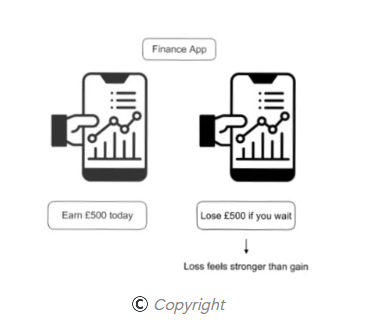
How framing changes the way consumers perceive your offer
The Framing Effect is all about perception. The way you frame or present the same thing changes how people perceive it. Customers don’t just react to the facts; they react emotionally to how those facts are shown. The roots of the idea go back to the work of Tversky & Kahneman (1981), applied in marketing by Ries & Trout.
Your customer isn’t evaluating reality, but the version of it you show them. Every landing page, pitch, or message creates a frame that shapes the customer’s emotional response to value or risk. Don’t just polish your offer, reframe it.
Be careful! A great product can flop if it’s not presented well, while an average one might do well with the right framing. How people see your offer matters more than how it actually performs.
A quick picture of what it looks like with two businesses. A pet store might use a positive message such as ‘Keep your dog happy with healthy snacks’ and a negative one like ‘Avoid hurting your dog with unhealthy treats’. A coffee shop might use a positive frame such as ‘Enjoy 80% fresh fruit in every juice’ and a negative frame like ‘Contains 20% added sugar’. The offer ‘Contains 20% added sugar’ triggers alarm and may make customers reject the product. But if you are the brand, you normally choose the positive ‘80% fresh fruit’, because your aim is to attract, not to scare.
When it comes to risk, health, or money, customers usually react more strongly to the negative frame (loss frame). For example: ‘Don’t miss out’ often works better than ‘Get more.’ But in aspirational or lifestyle categories (fashion, luxury, experiences), the positive frame is often more powerful because it builds desire and status.
Many startups fail not because their products are bad, but because they frame them incorrectly; effective framing is often the key to success or failure. For instance, a business course marketed as 'fix your client pipeline' tends to sell better than one positioned as 'learn sales theory,' and a payment platform promoted as 'don’t lose 8% in fees' converts better than one simply described as offering a 'faster checkout.'
Buyers are influenced by how products make them feel and those feelings are shaped by the frame you create.
How to apply this to your brand:
- Frame the gain for aspirational products: focus on the status, identity, and pleasure the customer will acquire
- Frame the loss for practical problems: for decisions involving money, health or risk, focus on the pain or loss the customer will avoid
- Re-frame your features as outcomes. Instead of ‘Learn sales theory’ (a feature), offer to ‘Fix your client pipeline’ (an outcome)
The same number, framed differently, creates a stronger reaction. Test both frames, but remember: risk and money trigger stronger reactions in loss terms.


